Birdsfoot trefoil identification and control
About this weed
Birdsfoot trefoil is designated as a weed of concern in King County. This means control is not required, but is recommended, and new plantings are discouraged.
Birdsfoot trefoil is known as Lotus corniculatus, and it is in the pea family. Other common names are birdsfoot deervetch, eggs and bacon, cat’s clover, bloomfell, crowtoes, and ground honey suckle.
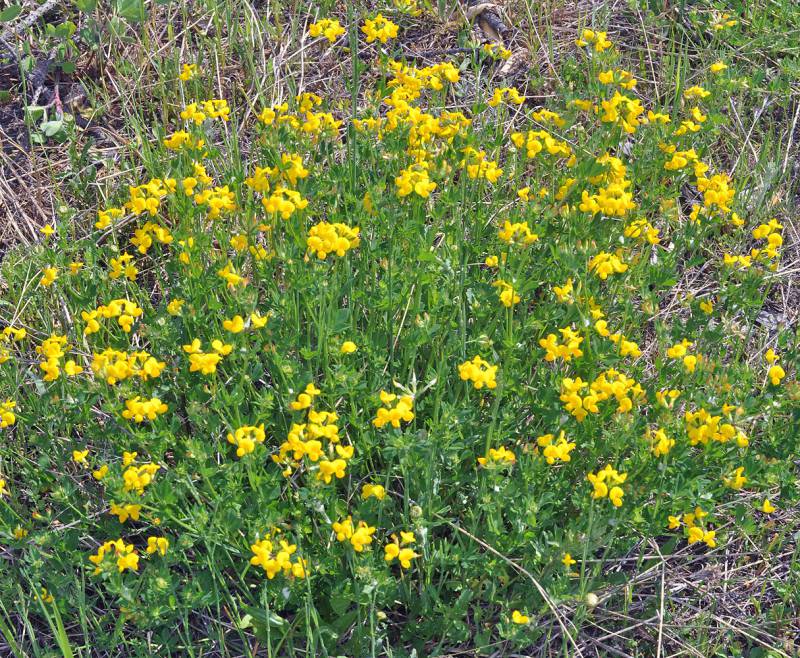
Why it’s a problem
Birdsfoot trefoil creates dense mats that can choke out other plants.
Prescribed burns increase germination, causing it to be especially troublesome in native prairies.
All parts of birdsfoot trefoil are toxic to humans. Ingesting large amounts could cause respiratory failure.
Plant description
Birdsfoot trefoil was introduced as an agricultural forage crop and is still used as feed for cattle and sheep in some parts of the country. Native to grasslands in temperate Eurasia and North Africa, it now has a broad distribution worldwide.
Birdsfoot trefoil is a perennial plant (plant that has a life cycle of 2 or more years) with fine stems and clover-like leaves. It grows 6-24 inches in height.
Erect stems are almost square and rise from a central point. Their many branches become tangled, forming thick mats.
The leaves are made up of three clover-like compound leaflets (one-half inch long) on a short stem with two additional stalkless leaflets at the base of the stem.
The flowers are yellow (sometimes with red streaks), pea-like, and about one-half inch long. They are typically in flat-topped clusters in 2-12 and bloom most of the summer.
The seeds are pods that occur in clusters that look like a bird’s feet. The pods are brown to black, cylindrical, and one-half to 1 and one-half inches long. Each pod contains 10 - 20 seeds that they eject when they mature.
It reproduces using three different methods: seed, rhizome (underground stems that put out roots and shoots at intervals), and aggressive above ground runners. All of which result in a thick tangle that will push out native species.
It is typically found on roadsides, waste areas, fields, prairies, wildlife openings, and open disturbed areas. It tolerates a variety of soil types, including dry, moist, hardpan, or droughty soils.
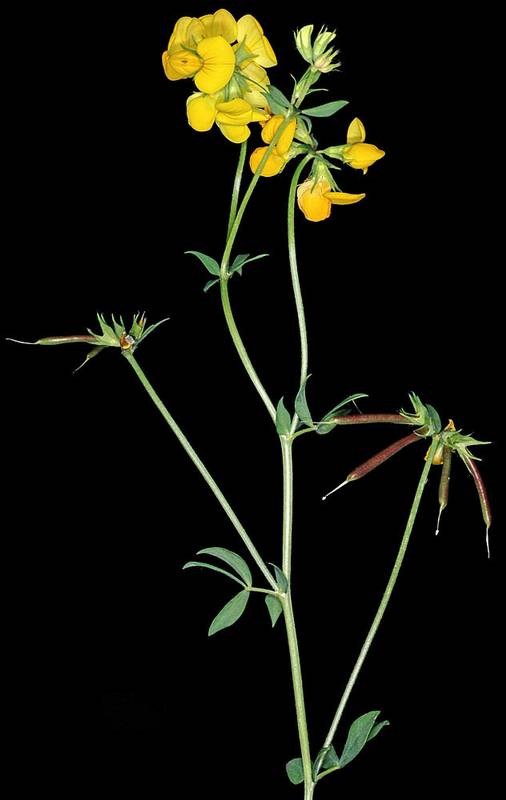
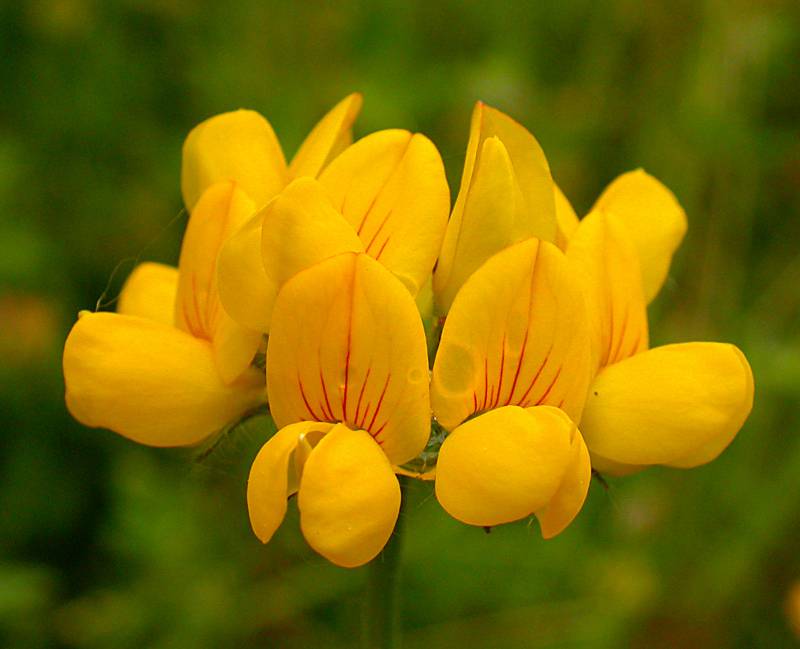
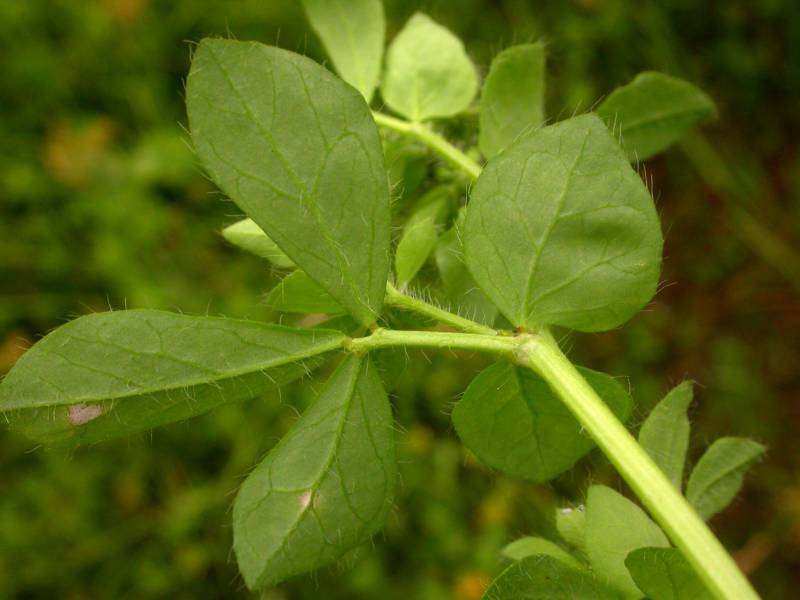
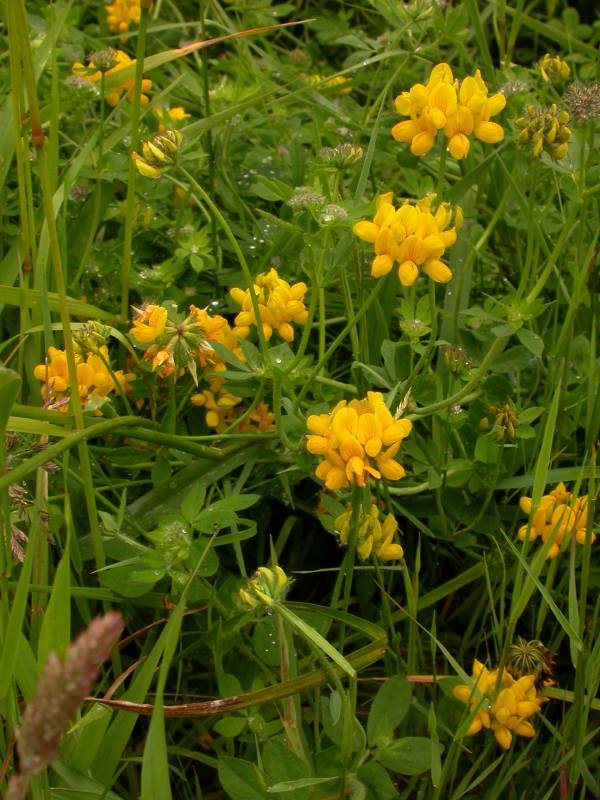

Be aware of look-alike plants
Birdsfoot trefoil can be confused with yellow toadflax, Linaria vulgaris.
One distinct feature of the yellow toadflax are the leaves. They are long and narrow, while birdsfoot trefoil has rounded clover-like compound leaflets.
Another similarly growing plant with a yellow flower is common St. Johnswort, Hypericum perforatum. St Johnswort has a different looking flower with 5 petals. Without flowers, you can tell them apart because birdsfoot trefoil has fine hairs found on the leaves and stem, whereas St. Johnswort is completely hairless.
Birdsfoot trefoil can also be confused with young Scotch broom, Cytisus scoparius. One way to tell them apart is by their stem. Scotch broom has a ridged stem, whereas birdsfoot trefoil does not.
When in doubt, take photos and report them on iNaturalist.
What to do if you find it
Property owners in King County are not required to control birdsfoot trefoil. Even though we are not tracking infestations, we can provide advice on how to control it.
The Noxious Weed Control Board encourages property owners to remove birdsfoot trefoil where possible, and to avoid introducing it to new landscapes.
Control methods
We recommend using a combination of methods to control weeds. In areas with few weeds, it is important to act quickly before they become harder to control. Make a long-term plan as it often takes several years to get rid of most weeds. Start in the least infested areas first and then move into more heavily infested areas.
All methods will require follow up and maintenance, be persistent.
Manual/Mechanical control
A pitchfork or garden fork are useful tools for removing as much of the root as possible. It's important to follow up later in the season and in following years with regular mowing.
Once the roots have been removed, regular mowing at a height of 2 inches for several years helps control the plant.
Keep in mind this may be damaging to native plants.
Chemical control
Stay safe when using herbicide:
- Always read the label before use.
- Wear a long-sleeved shirt, long pants, shoes, and eye protection.
- Follow state and local regulations.
If you want to maintain surrounding grasses, use a selective herbicide.
Herbicide control can be done by spot-spraying affected areas with a selective herbicide. This is a systemic herbicide that is taken up by plants and moves within the plant, which can kill leaves, stems, and roots. Be aware that this selective herbicide can affect native plants of the sunflower and pea families.
Non-selective herbicides are also effective. However, these may be damaging to surrounding plants. Common, general use broad leaf herbicides include:
- Clopyralid
- Glyphosate
- Triclopyr
Disposal instructions
Bag and dispose of flowers and seed pods. Do not add these to compost or yard waste.
All other plant parts may be composted.
If you'd like additional information about weed disposal:
Noxious Weed Disposal - Washington State Noxious Weed Control Board

 Translate
Translate